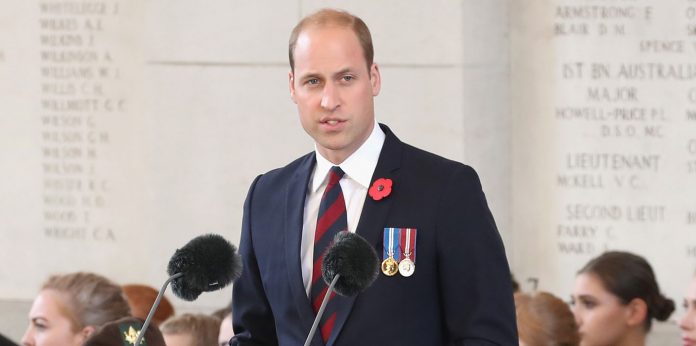The Duke of Cambridge will attend the New Zealand National Commemoration for the Battle of Passchendaele
Tyne Cot Cemetery, Belgium
Thursday 12th October, 2017
The Duke of Cambridge, representing Her Majesty The Queen, will attend the New Zealand Commemoration for the Battle of Passchendaele on Thursday 12th October. His Royal Highness is taking part at the invitation of the government of New Zealand, which has organised the event. The Commemoration marks the centenary of what became known as the ‘darkest day’ of World War I for the New Zealand Division which, on 12th October 1917, suffered heavy losses during the Third Battle of Ypres.
On arrival at Tyne Cot Cemetery in Flanders, The Duke will be welcomed by representatives of the New Zealand government and the Commonwealth War Graves Commission, which has responsibility for the Cemetery. There will also be a ceremonial welcome from the Māori Cultural Group of the New Zealand Defence Force.
His Royal Highness will then attend the National Commemoration Service, during which he will give an address on behalf of The Queen and lay a wreath at the New Zealand Memorial Wall to the Missing. After the service, The Duke will take part in the unveiling of a Centenary Plinth to mark the occasion. At the Tyne Cot Visitors Centre, he will meet New Zealand youth ambassadors and the historian, Dr. Ian McGibbon, who will provide a military overview of the Third Battle of Ypres. The visit will conclude with a lunch reception. Invited guests will include Willie Apiata VC, New Zealand’s only living Victoria Cross recipient, and members of the 90-strong New Zealand Defence Force Contingent in Belgium for the Commemoration, alongside local and national representatives.
During the course of the First World War, almost 100,000 New Zealanders – close to 10% of the country’s then population – served overseas in the New Zealand Expeditionary Force (NZEF). More than 2200 Māori and around 500 Pacific Islanders served overseas with the New Zealand forces. Additionally, 550 nurses served overseas with the New Zealand Army Nursing Service, while others enlisted in the United Kingdom.
The Great War would claim the lives of 18,000 New Zealanders and lead to the wounding of 41,000. 2779 died at Gallipoli and more than 12,000 on the Western Front. The names of those who died are recorded on approximately 500 civic war memorials throughout New Zealand.
The Belgian village of Passchendaele has become a byword for the horror of the Great War on the Western Front. There, on 12 October 1917, the New Zealand Division attempted to take a German position at Bellevue Spur. Approximately 960 men were either killed in the fighting or died later of their wounds. The ‘darkest day’ accounted for six percent of New Zealand’s total casualties during the First World War. A further 1700 men were either wounded or became prisoners of war.
‘Tyne Cot’ or ‘Tyne Cottage’ was the name given by the Northumberland Fusiliers to a barn which stood near the level crossing on the Passchendaele-Broodseinde road. Around it were a number of German blockhouses, or pill-boxes. Today, the site is the world’s largest Commonwealth War Graves Commission cemetery, and the final resting place of almost 12,000 servicemen of the British Empire from the First World War.
To get all the latest royal news delivered straight to your door, subscribe to Royal Life Magazine today.










